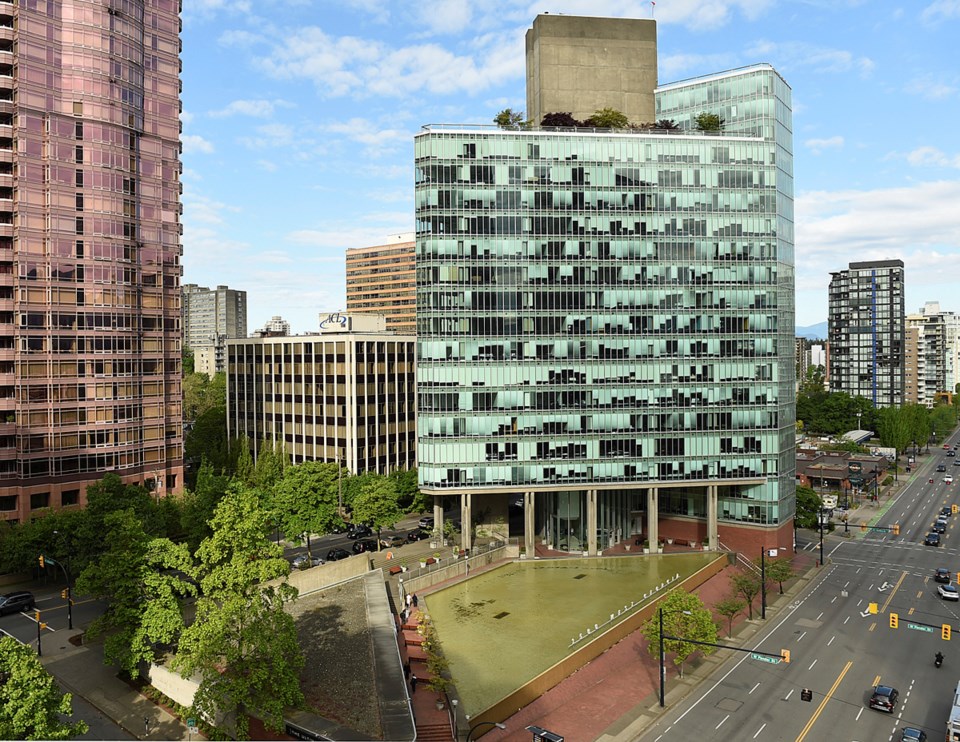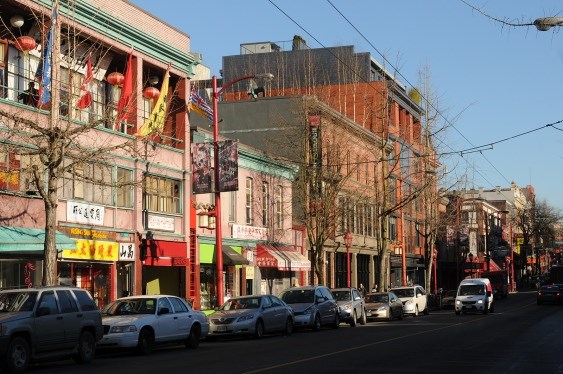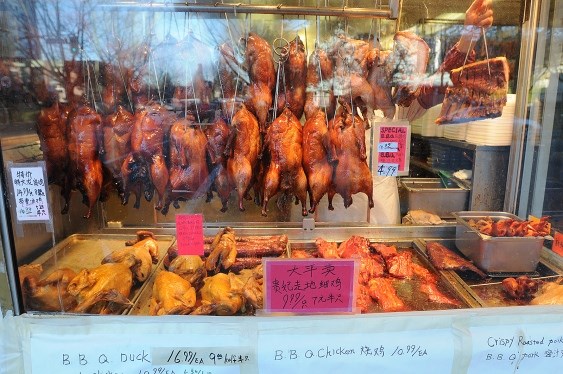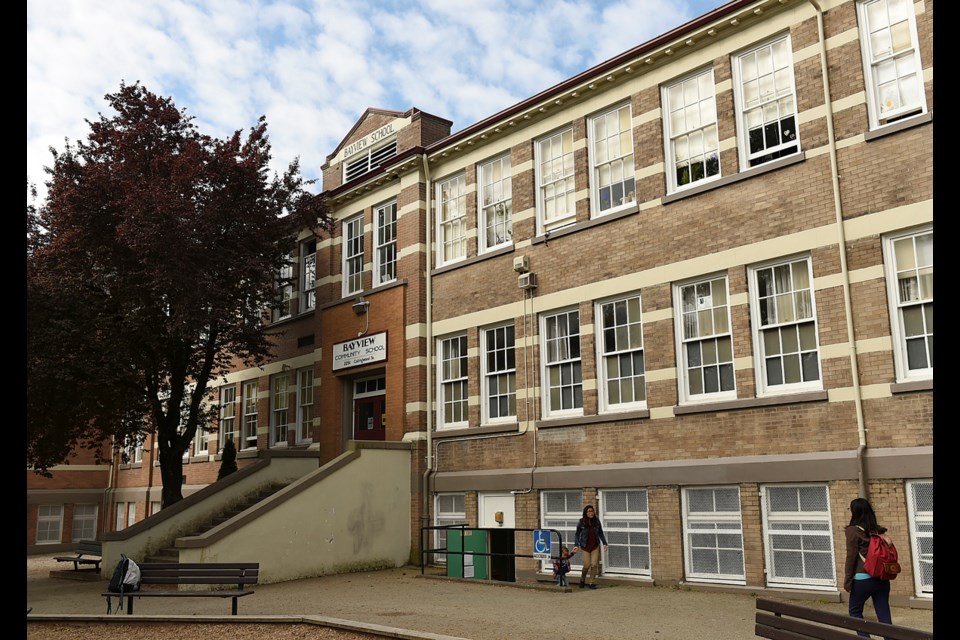A heritage school is once again in the top spot on Heritage Vancouver’s annual Top 10 endangered sites list. Bayview elementary at 2261 Collingwood St. earned the dubious honour for 2016. It represents conservationists’ ongoing concern about the city’s historic schools. Last year, Point Grey secondary grabbed the top spot.
Bayview was built in 1913-1914 in the Classical Revival style. It’s on the VSB’s priority list for a seismic upgrade — hence the concern.
Patrick Gunn, who sits on Heritage Vancouver's board of directors, said schools are a major issue in Vancouver.
“They have been for the past 10 to 12 years since the seismic mitigation process has been going on,” he said. “They are such a strong community landmark and that’s generally why we’ve put schools at number one because the issue is ongoing and there doesn’t seem to be any resolution in the near future.”
Two of Vancouver’s heritage schools were knocked down this year — J.W. Sexsmith and Sir James Douglas.
Demolition of Sir James Douglas Elementary. @VSB39 pic.twitter.com/KbCwg7TIZS
— Maria Rantanen (@HaneyInkslinger) March 1, 2016
Gunn said school buildings serve as the centre of communities, so there’s a lot of passion for historic ones.
The seismic mitigation process, in which the school board determines whether a school is preserved or replaced, is the crux of the problem, according to Gunn.
“Everyone agrees the schools need to be seismically upgraded. The issue is how that process goes about and the funding that the VSB receives from the provincial government,” he said.
But Gunn maintains highlighting schools on Heritage Vancouver’s watch list has made a difference.
“When we first started, there was no real focus even on heritage with the VSB and we’ve actually been having quite a few encouraging dialogues with the VSB in the last few years because of this,” he said. “And you can see, even in the last year, there’s now a process of looking at the heritage resources where there hasn’t been in the past. So, it is improving and that’s one of the reasons the Top 10 list is pushed out there — to create this continued awareness. We’re encouraged by what has happened, but we’re still losing schools at a rapid rate and there are still quite a few more on the chopping block.”
A new addition to the endangered sites list is Crown Life Plaza at 1500 West Georgia St.
Built in 1978, it’s in the number two position.

The tower, pool and waterfall serve as a gateway to the central business district and “are highly visible on the walking route from Stanley Park via the Causeway,” a writeup about the list points out.
Peter Cardew was the project architect for the building.
The Vancouver Heritage Commission wants the entire immediate block, including the plaza, added to the Vancouver Heritage register. It’s currently on the city’s informal list of recent landmarks.
Gunn said concern about the site was sparked by a development permit. There’s a proposal to develop the east side of Georgia Street, which would require the pool and waterfall to be altered or removed to make way for a tower.
“The issue we have isn’t with the design of the tower, but it’s the infill and how it should be subordinate to the primary tower. [In] the original proposal, the infill tower was becoming primary and taking out one of the main significant components of 1500 West Georgia, which is that large pool and plaza area,” Gunn said. “Since then, it’s been amended somewhat, but it’s still going to take out that whole plaza and waterworks area.”
Chinatown, meanwhile, captured third place on the watch list. Preservationists fear for its future with ongoing development.
While new buildings are required to retain a “Chinatown look,” city guidelines don’t address all the characteristics that the community considers important, according to Heritage Vancouver.

“These characteristics include tangible and intangible aspects of Chinatown’s unique and authentic character, such as community and cultural activities, a diverse housing mix for affordability and an aging population, and experiences of Chinatown’s culture and heritage in urban life,” Heritage Vancouver explains.
Society manager Bill Yuen said during the past year Chinatown has earned a lot of media attention over such concerns and activists have called for a moratorium on development.
“I think a lot of people are feeling that the character is changing quite a bit with the new residents coming in, the new developments coming in,” he said. “It’s not really tying in with the character in Chinatown. And there’s this feeling that if nothing more is going to be done about the neighbourhood character, there’s going to be a loss of Chinatown — that’s one of the reasons why it’s on the list and why it’s so high up. If you talk to my parents’ generation, they feel like Chinatown is not Chinatown anymore.”
Yuen hopes the city can introduce new tools, outside of zoning, to protect Chinatown’s intangible characteristics. He cites such places as the neighbourhood’s barbecue shops. Yuen said perhaps they could get tax incentives because they represent an intangible value.

"We’re looking to something creative like that. There's a lot of design requirements, there’s a lot of zoning requirements in Chinatown and part of it is protected as a National Historic Site, but I think those regulations aren’t enough,” he said.
“If you look at the planning documents for Chinatown — the Chinatown Neighbourhood Plan, the Economic Revitalization Plan and also the Downtown Eastside Plan, there are a lot of aspirations for what Chinatown should be. And I don’t think there’s any confusion by anybody, if they read those documents, what the intent [is about] how Chinatown should be. There’s a vision there, but there’s a gap between how to get there. Zoning and design guidelines by themselves aren’t going to help the vision materialize. So I think there’s a gap in tools. I think we should move [away from] tying heritage solely to buildings.”
The final seven entries on the 2016 Top 10 watch list are:
- Salvation Army Temple (1950), 301 East Hastings St.
- St. Stephen’s United Church (1964), 7025 Granville St.
- Red Light District of Alexander Street, 500-600 blocks of Alexander St.
- Commercial Drive
- Townley & Matheson homes
- Vancouver College
- False Creek South
Heritage Vancouver hosts a bus tour of the sites on the Top 10 list from 1 to 5 p.m., May 7. See heritagevancouver.org for tickets and details.
@naoibh



